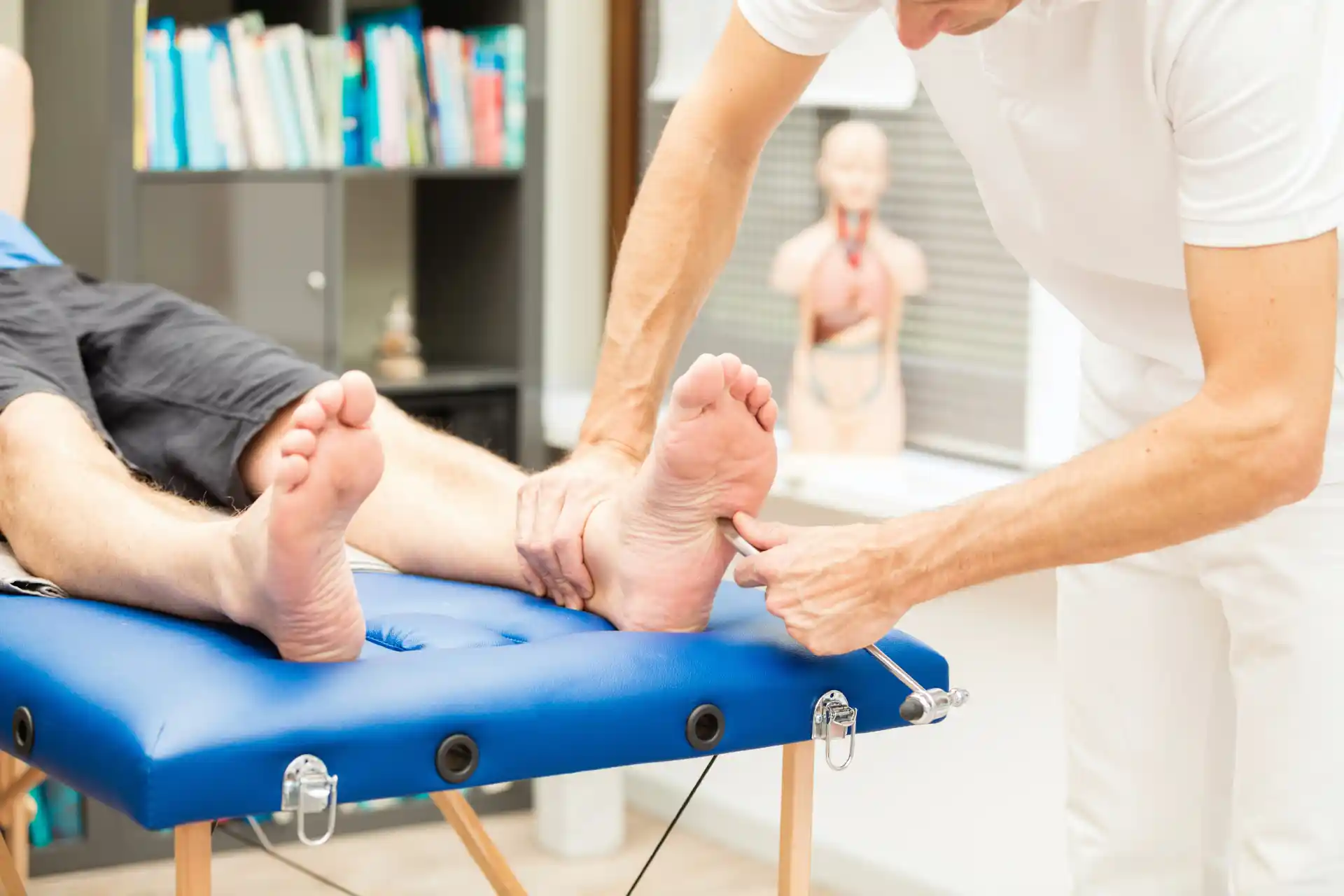A rising number of athletes, gym enthusiasts, and even casual exercisers face a hidden obstacle when progress plateaus or performance starts to decline: overtraining syndrome.
Studies from the Cleveland Clinic suggest that approximately two-thirds of elite runners encounter this problem at some point in their careers. While you might not be an elite runner, you can still develop this issue if you push your body too hard without enough rest.
Below, you will find a thorough look at what causes overtraining syndrome, how to spot the warning signs, and practical ways to avoid it.
With balanced recovery and smart training techniques, you can keep your workouts both challenging and healthy.
Recognize Overtraining Syndrome
Overtraining syndrome occurs when you exceed your body’s ability to recover between workouts. Exercise causes stress that drives adaptation—but without proper rest, your body can’t rebuild.
This imbalance leads to prolonged fatigue, reduced performance, and higher injury risk.
Unlike simple post-workout soreness or short-term “overreaching,” which usually resolve with rest; true overtraining may take weeks or months to recover from.
Impact on Your Body and Mind
One reason overtraining syndrome is so serious is the strain it places on both your muscles and your mental well-being. Chronic fatigue can dampen your mood, disrupt sleep, and even alter hormone levels.
In severe cases, intense overtraining may lead to rhabdomyolysis, a serious condition described by UCLA Health in which overworked muscle tissue breaks down so drastically that it releases harmful proteins into your bloodstream.
The mental implications can also be profound. You might lose motivation, become irritated, and feel unusually anxious. This double effect—physical and psychological—makes overtraining syndrome particularly challenging to manage.
Spot The Warning Signs
Recognizing the early and advanced indicators of overtraining syndrome is key. Acting promptly will save you from lengthier downtime and help prevent a simple tired spell from turning into a persistent plateau.
- Sudden drop in performance: You can’t lift or run as well as before, despite consistent effort.
- Persistent fatigue: You feel drained before and during workouts, no matter how much rest you get.
- Elevated resting heart rate: Your pulse stays high even at rest, signaling system stress.
- Shortness of breath: Routine workouts suddenly feel harder, and recovery takes longer.
- Mood changes: Irritability, anxiety, or low motivation start interfering with daily life.
- Poor sleep: Trouble falling asleep or frequent waking leaves you unrested.
- Decreased appetite: Your body feels too tired to eat despite calorie needs.
- Frequent illness: A weakened immune system leaves you more prone to colds or infections.
Overlap With Muscle-Related Issues
If you already deal with strains or discomfort—such as a pulled chest muscle, calf strain, or muscle spasms—overtraining can slow your healing and worsen existing injuries.
You can also explore myalgia to compare typical muscle pain with the chronic soreness from overtraining syndrome.
Know The Risk Factors
Anyone can push too hard in training, but certain groups and behaviors raise your likelihood of developing overtraining syndrome. Learning about these risks helps you shape a safer, more strategic routine.
- Competitive athletes: Elite competitors often feel pressure to excel, leading them to train nearly every day, sometimes for hours. The Cleveland Clinic confirms that two-thirds of elite runners may face overtraining at some point.
- Rapid workload increases: Adding too much weight to your lifts, running extended distances without enough rest in between, or spinning up high-intensity intervals every day can push you over the edge.
- Poor nutrition: Skipping balanced meals slows muscle repair and energy restoration.
- Chronic stress or lack of sleep: Demanding work hours, emotional stress, or limited sleep can tip you closer to overtraining.
Read more on conditions that happen frequently among athletes and active people, due to overtraining or repetitive training: runners knee, quad tendonitis, and ligament injuries.
Prevent Overtraining Effects
Preventing overtraining syndrome means combining a smart training plan and healthy lifestyle habits. You can protect yourself from potential setbacks by scheduling enough rest and being mindful of how your body feels from one workout to the next.
Build In Rest And Recovery
- Schedule Active Rest Days: Light activities, such as gentle swimming or walking, boost circulation without placing excessive strain on your muscles.
- Rotate Muscle Groups: Give each muscle group at least 48 hours to recover before targeting it again. This approach is especially helpful if you do resistance training multiple times a week.
- Explore Active Recovery Strategies: Techniques like foam rolling, gentle stretching, or even yoga can encourage blood flow to tight spots and help them heal. If your tightness does not seem to fade, you might look into how to release chronically tight muscles.
Adjust Training Progress Gradually
Many experts suggest following the “10 percent rule”—adding no more than 10 percent to your weekly mileage or weightlifting volume at a time. This slow-burn progression prevents your body from being shocked by massive intensity changes.
Similarly, if you plan to pick up a new workout style, ease into it rather than diving into advanced sessions on day one.
Monitor Nutrition And Hydration
Sports nutrition is not one-size-fits-all, but it helps to balance macronutrients properly:
- Protein: Essential for muscle repair. Lean meats, fish, beans, and plant-based options like tofu or tempeh are good sources.
- Carbohydrates: Provide energy and help restore glycogen levels. Choose complex carbs, such as brown rice and oatmeal, for sustained energy.
- Fats: Healthy fats from avocados, nuts, and seeds support hormone production and overall cell function.
- Hydration: Water is vital for regulating body temperature, transporting nutrients, and removing waste. Dehydration can accelerate fatigue and hamper performance.
Check in with a nutrition specialist if you suspect your eating plan may be holding your performance back. A balanced fuel strategy works wonders in keeping you strong and ready for regular training.
Support Mental Well-Being
Overtraining has distinct mental and emotional components. Good news—simple stress-relief measures make a big difference.
Meditation, journaling, or even short nature walks can reduce your overall stress burden, which helps your body remain resilient.
If you feel constant mental strain or mood swings tied to exercise, speak to a mental health professional.
Overtraining syndrome requires a holistic approach that respects mental as well as physical health.
Recover And Return Strong
If you suspect you have gone beyond normal fatigue and into overtraining syndrome, taking steps to rehabilitate your body is crucial.
If fatigue, irritability, or performance dips persist, pause training and rebuild systematically:
- Confirm the cause: Track mood, heart rate, and energy; consult a sports medicine professional if symptoms persist.
- Reduce workload: Cut training volume in half and shift to low-impact exercises.
- Refuel and rest: Eat nutrient-dense foods and get 7–9 hours of sleep each night.
- Return gradually: Increase training volume slowly, following the 10% rule.
A Helpful Recovery Table
Keep in mind these durations are approximate. Everyone recovers at a different pace. If in doubt, or if significant symptoms remain, consult a sports medicine expert.
Take An Encouraging Next Step
Overtraining syndrome is not inevitable; you can safeguard your progress with proper rest, balanced workouts, and healthy eating habits.
Listen to your body. If you pick up on the early warning signs—low motivation, unexpected fatigue, or persistent soreness—be proactive in scaling back. Catching these hints early often means a quicker bounce back.
If certain muscle strains seem persistent during training, consider looking into sprain vs strain to confirm what you are dealing with.
When you give your body the space it needs to rebuild, you come back stronger. You will likely see bigger gains from your workouts in the long run.
Think of rest as an essential part of your training cycle: without it, you risk stalling out or getting hurt.
Seek RELIEF®
RELIEF® is an evidence-backed treatment that targets dysfunctional fascia—the connective tissue that surrounds and supports muscles. When fascia becomes tight or adhered after injury, it can restrict movement, cause pain, and slow recovery.1,2
Using a minimally invasive hydrodissection technique, RELIEF® gently separates and releases adhered fascia and may help restore healthy tissue mobility and improve muscle recovery—without the need for steroids, surgery, anesthesia, or extended downtime.3,4,5
If you’re in the Miami area and recovering from a muscle injury, contact us today to schedule a consultation and learn how RELIEF® can help restore your mobility and comfort.




.webp)

.svg)